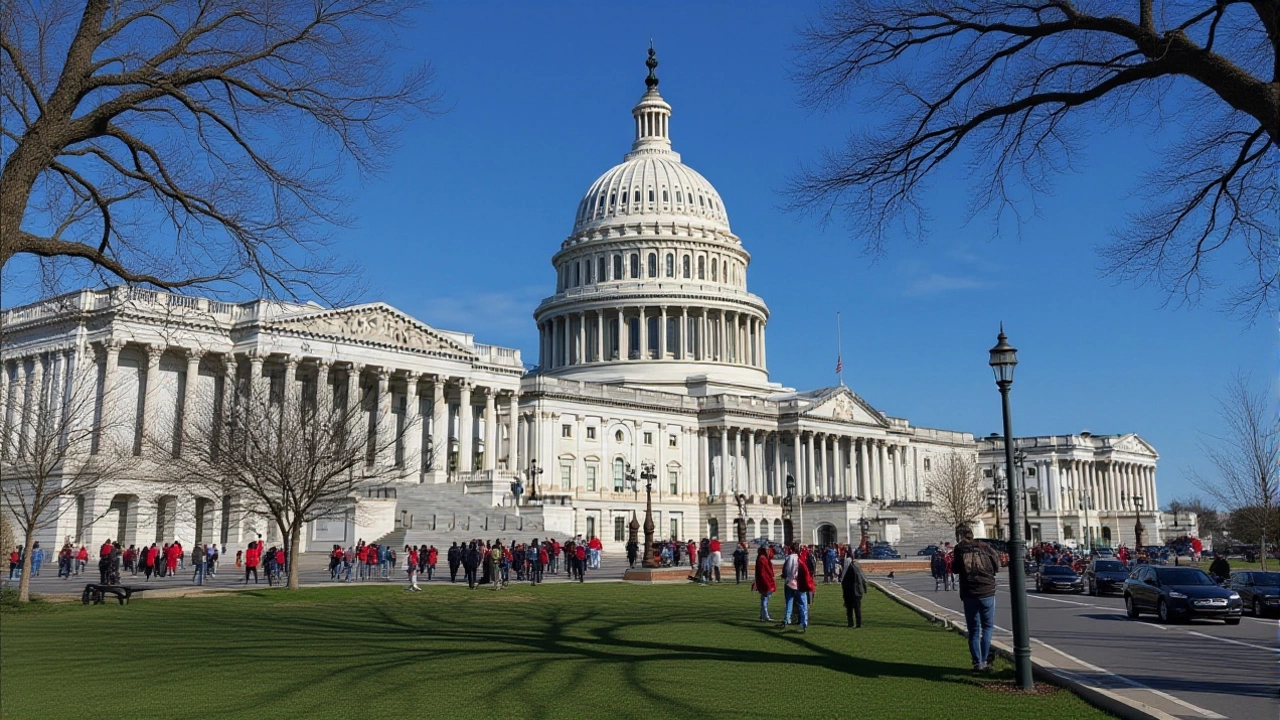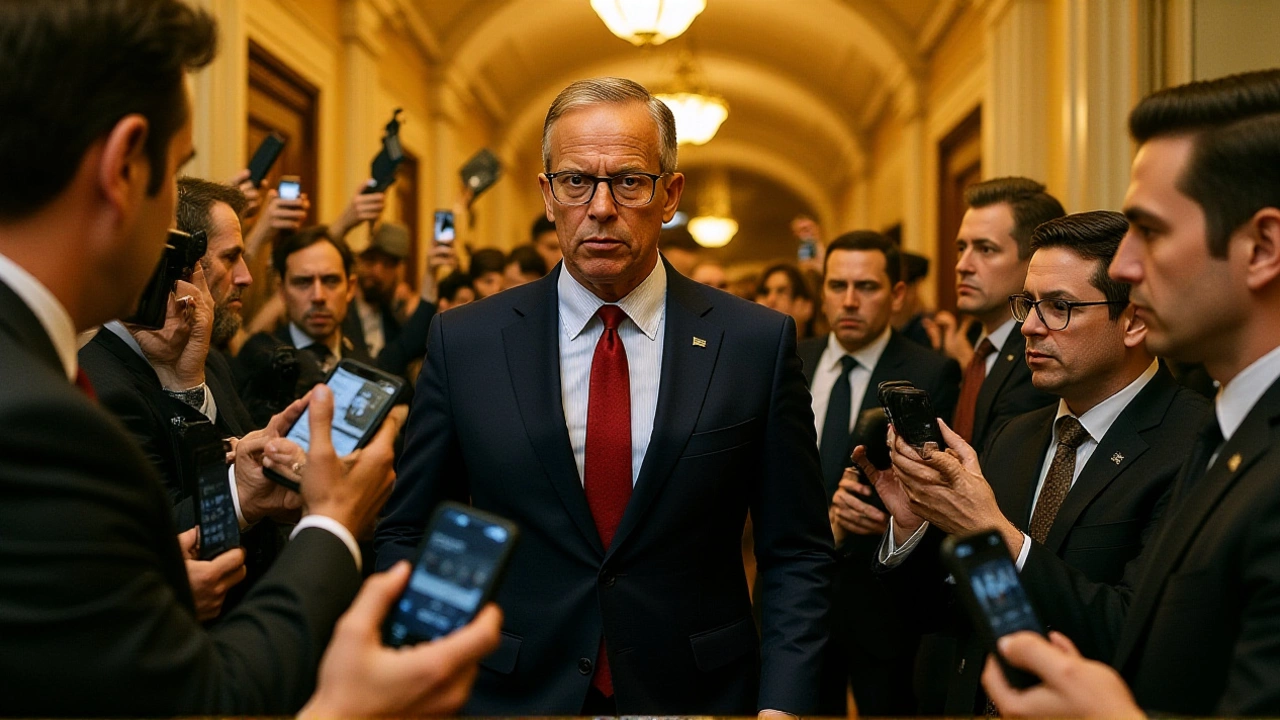When the United States Senate turned down two opposing funding measures on September 19, 2025, the prospect of a government shutdown loomed larger than ever. The vote took place in the Capitol—Washington, D.C. at roughly 1:05 PM EDT, just days before the new fiscal year on Oct. 1, 2025. With neither bill reaching the 60‑vote hurdle, the Senate set the stage for a shut‑in that could furlough hundreds of thousands of workers and spike health‑care premiums for millions.
Potential government shutdown of Oct. 1, 2025Washington, D.C. could trigger furloughs for hundreds of thousands of federal workers if no funding bill passes.
Senate leaders from both sides blamed each other for the stalemate. John Thune, Senate Majority Leader of U.S. Senate called the Republican proposal a “clean, non‑partisan, short‑term continuing resolution,” while Chuck Schumer, Senate Democratic Leader of U.S. Senate labeled the same bill a “dirty CR” that “leans heavily on the left‑wing agenda.” The tension reflected a deeper divide over two very different policy priorities.
Background: Funding Deadlock in a New Fiscal Year
The federal budget process traditionally concludes with a series of “continuing resolutions” (CRs) that keep agencies running while lawmakers hammer out the full appropriations bills. This year, the deadline fell on the first day of the fiscal year—Oct. 1, 2025—leaving a narrow window for compromise. The House, a Republican‑controlled chamber, had already passed a short‑term funding bill earlier that morning. The measure cleared the House with the help of Jared Golden, Representative of Maine’s 2nd District, the sole Democrat to back the Republican‑led plan.
The Republican‑backed measure would have kept spending at existing levels for seven weeks and added $88 million for security upgrades after the shooting of activist Charlie Kirk. Only 44 senators voted for it, falling 16 votes short. Susan Collins, Senator of Maine supported the bill, while fellow Maine senator Angus King, an Independent who caucuses with Democrats, voted against it. Rand Paul, Senator of Kentucky broke with his party to oppose the GOP plan.
The Democratic alternative, championed by Schumer, aimed to extend enhanced Affordable Care Act (ACA) subsidies that were set to expire at the end of 2025 and to roll back Medicaid cuts embedded in a Republican tax‑cut package passed earlier in the year. The proposal also contained additional funding for disaster relief and election security. It failed to attract the 60 votes needed, prompting the Senate to adjourn without a resolution.
Details of the Competing Bills
The Republican CR would have frozen discretionary spending at FY 2025 levels, a move favored by fiscal conservatives who argue that “government growth must be checked.” In addition to the $88 million security allocation, the measure included a modest increase in the “civil service pay freeze” that many federal employees had been living under since 2023.
Conversely, the Democratic plan proposed a 2–percent increase in ACA premium tax credits for individuals earning between 100 % and 400 % of the federal poverty line. Analysts estimate that the credit boost could lower monthly premiums for roughly 12 million Americans by an average of $250. The bill also sought to restore $3 billion in Medicaid funding that had been cut to offset the 2024 tax legislation.
Both proposals featured language that would have allowed the president to sign them without further debate. Donald Trump, President of the United States indicated he would sign either bill, emphasizing the “need to keep the government open and functioning.” However, his administration’s public statements have been vague about which version they prefer, leaving both chambers to guess at the president’s appetite.
Reactions from Senate Leaders and the White House
Immediately after the votes, Thune accused Democrats of “playing brinkmanship” that “hurts everyday Americans.” He added, “All it takes is a handful of Democrats to join Republicans to pass the clean, non‑partisan funding bill that’s in front of us.” Schumer fired back, saying, “The American people will see who is standing up for health‑care and who is playing political games.”
In a brief press briefing, White House Press Secretary Karoline Leavitt warned that the Office of Management and Budget was “working with agencies on contingency plans, including which employees could be furloughed if a shutdown persists.” National Economic Council Director Kevin Hassett told CNBC that “if the shutdown drags on, the president may need to take sharp measures, and Democrats will be held accountable for any job losses.”
Collins, who voted for the Republican CR, appealed to colleagues on the Senate floor, urging them “to abandon this brinksmanship … and adopt the straightforward bill sent to us by the House.” Her comments drew criticism from the Maine Democratic Party, which accused her of “falling in line with President Trump and the GOP.”
Implications for Federal Employees and Health‑Care Consumers
If the shutdown proceeds at 12:01 AM EDT on Oct. 1, federal workers across the nation could face immediate furloughs. The Government Accountability Office estimates that a 48‑hour shutdown costs the economy roughly $5 billion in lost productivity. In previous shutdowns, agencies like the Departments of State and Labor have had to suspend visa processing and unemployment benefit distribution, creating knock‑on effects for businesses and individuals.
For health‑care, the stakes are equally high. Without the extension of ACA subsidies, analysts at the Kaiser Family Foundation project a 12–percent jump in premiums for low and middle income shoppers. That could translate into an additional $3 billion in out‑of‑pocket spending nationwide. Maine, where Collins and King represent key constituencies, already saw a 24 percent increase in individual market premiums earlier this year, underscoring the urgency of the issue.
Senator King emphasized that “we can’t afford to let millions of Americans lose coverage while we argue over dollars on the Hill.” Meanwhile, Collins noted that “the credits must be extended by year‑end, or we risk a wave of unaffordable insurance bills.” Both statements highlight why the health‑care component has become a flashpoint in the broader budget fight.

What Comes Next? Options on the Table
With the Senate entering a scheduled recess next week, lawmakers have a limited window to reconvene before the midnight deadline. Options include: (1) reviving the Republican CR with a few Democratic votes; (2) renegotiating a hybrid bill that blends middle‑ground funding levels with a modest ACA credit extension; or (3) allowing a brief shutdown to force a compromise, a tactic some Democrats have hinted at.
Political analysts suggest that the “sweet spot” may be a 35‑day CR that funds the government at current levels while extending ACA subsidies for a limited period. Such a compromise could satisfy fiscal conservatives while addressing the immediate health‑care concerns of Democrats.
Regardless of the outcome, the episode underscores how deeply budgetary politics have become intertwined with policy issues that affect everyday Americans—from paycheck stability to health‑care affordability.
Historical Context: Comparing Past Shutdowns
The United States has experienced 21 partial shutdowns since 1976, with the longest lasting 35 days in 2018–19. Those episodes typically centered on disputes over border security or health‑care legislation. The 2025 standoff is notable for occurring under a second Trump administration and for featuring a rare bipartisan split on a Republican bill—four Democrats and one Independent voted with Republicans.
In the 2013 shutdown, which lasted 16 days over the Affordable Care Act, economists recorded a $6 billion dip in GDP and a rise in panic among federal employees. The current scenario mirrors those dynamics, suggesting that even a short‑lived closure could have outsized economic ripple effects, especially given inflationary pressures still lingering from the pandemic era.
Frequently Asked Questions
How does the shutdown risk affect federal employees?
If the shutdown proceeds, roughly 800,000 federal workers could be furloughed or required to work without pay. Essential personnel—such as air traffic controllers and border agents—would continue but without salary until funding resumes, creating financial strain for many families.
What would happen to ACA premium subsidies if the shutdown continues?
Without the Democratic bill’s extension, the enhanced tax credits expire on Dec.\u202f31, 2025. That would raise monthly premiums for about 12 million shoppers by an average of $250, potentially pushing many out of the marketplace altogether.
Why did some Democrats vote for the Republican CR?
Senators Catherine Cortez‑Masto (NV) and John Fetterman (PA) joined Independent Angus King to avoid an immediate shutdown. Their votes reflect a pragmatic calculation that a short‑term CR, even without ACA extensions, is preferable to a prolonged government closure.
What are the economic consequences of a shutdown this year?
The Congressional Budget Office projects a $5 billion loss in GDP for a 48‑hour shutdown, with ripple effects on private‑sector businesses that rely on federal contracts. Consumer confidence could dip, especially if health‑care costs rise sharply.
Is there a timeline for a possible compromise?
Lawmakers have until the Senate recess ends on Oct.\u202f7 to forge a deal before the deadline passes. Negotiations are expected to focus on a hybrid resolution that blends a modest funding extension with a limited ACA credit renewal.
